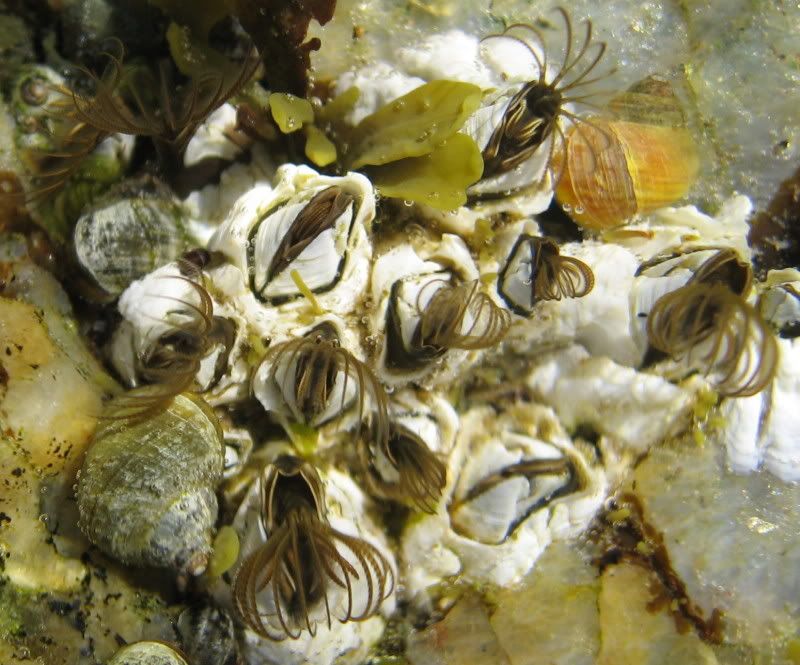
The tricky thing about doing research with barnacles is getting the barnacles back to the laboratory intact. You see, barnacles literally glue themselves to the rock that they settle on as larvae, and if you try to pick one off you'll inevitably bust it and kill it. So the only way to get barnacles for your experiments is to put a little piece of rock or tile in the water where and when you think the barnacle larvae are going to settle, and then pull it out once it is encrusted in small adult barnacles.
In New England, the barnacle larvae, little swimming bug-like creatures, usually descend from the plankton down to the rocks around the beginning of spring. This Tuesday though, Trussell's PhD student Catherine Matassa noticed that the critters were already starting to settle on the rocks of Nahant, weeks early. That meant we had to scramble up to our barnacle hotspot in Maine to deploy a bunch of tiles for them to settle on. (The barnacles in Nahant usually don't settle in great enough densities to make usable tiles- that's why we have to go to Maine.)
It's cold in Maine in winter (DUH!) but I got to use a loaner "Mustang Suit" that kept me fairly warm. It was neat to see frost and ice floes all around while doing marine biology stuff. Luke Miller set up a tripod to do a time-lapse video while we were working. I'm wearing the orange suit with the black legs.

2 comments:
How long do you have to wait before you can retrieve the little barnacles?
I'm not entirely sure. I think it takes at least a few weeks.
Post a Comment